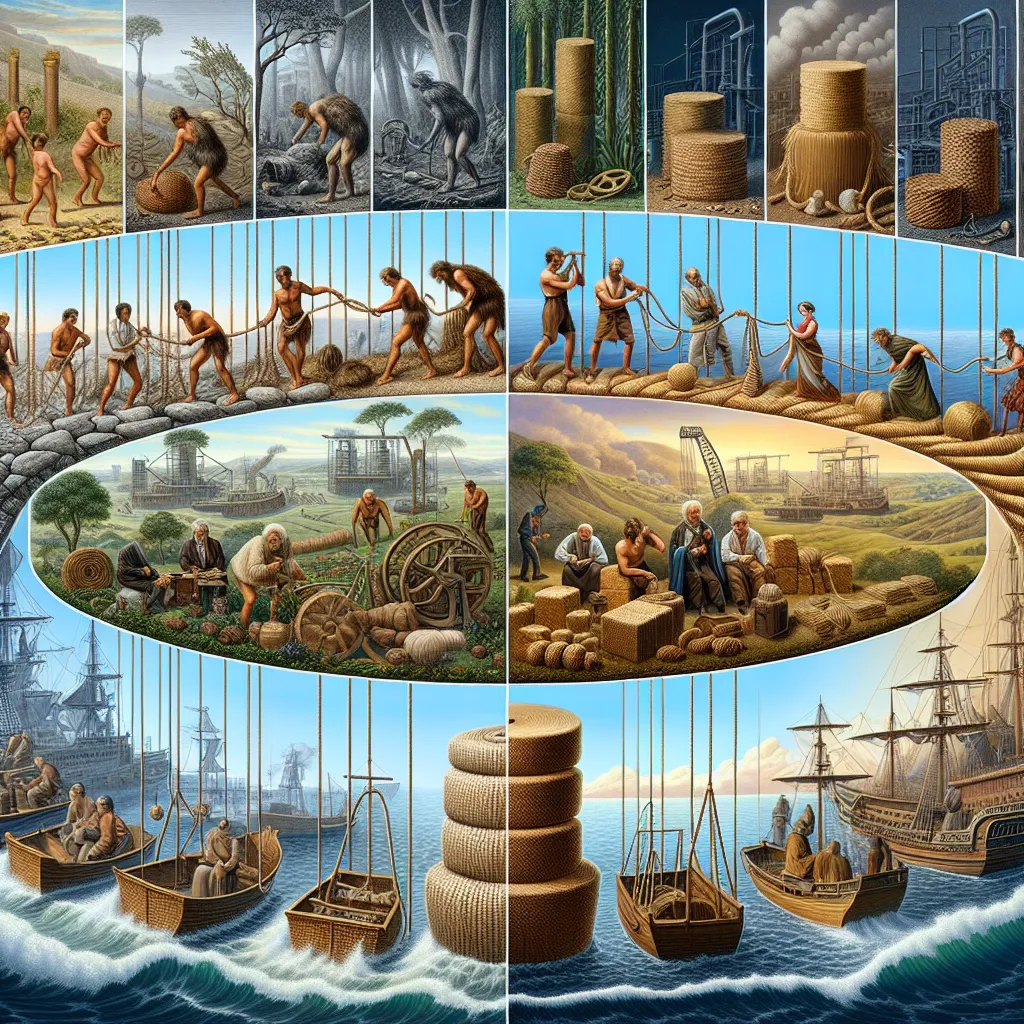
The History of Rope and Its Many Uses
The Evolution of Rope-Making Techniques
Rope has been an essential tool for human civilization for thousands of years. Its history dates back to ancient times, where early humans used materials like vines, animal hides, and plant fibers to create primitive forms of rope. The evolution of rope-making techniques has been a fascinating journey, driven by the need for stronger, more reliable ropes to meet the demands of various activities such as sailing, construction, and exploration.
One of the pivotal moments in the history of rope-making was the discovery of spinning and twisting fibers to create stronger and more durable ropes. This technique, which emerged around 4000 BC, involved twisting plant fibers together to form yarns, which were then twisted or braided to create ropes. The use of tools such as the drop spindle and later the spinning wheel revolutionized the production of rope, enabling the creation of longer and more even yarns, thus resulting in stronger ropes.
Furthermore, the Middle Ages saw the emergence of specialized rope-making guilds and the application of new materials such as hemp and jute. These advancements led to the production of ropes capable of withstanding heavier loads, making them crucial for the construction of large cathedrals, ships, and for various industrial purposes.
In the modern era, the industrial revolution brought about significant changes in rope-making techniques with the invention of machinery for spinning, braiding, and twisting fibers. This led to the mass production of ropes with consistent quality, making them more widely accessible for use in shipping, mining, and agriculture.
Today, rope-making techniques continue to evolve with the introduction of synthetic materials such as nylon and polyester, offering superior strength and durability. These modern ropes have expanded the range of uses, including rock climbing, rescue operations, and aerospace applications, demonstrating the enduring relevance of rope in the contemporary world.
In conclusion, the history of rope-making techniques reflects the ingenuity and innovation of human civilization in developing essential tools. From the early spinning of plant fibers to the modern production of synthetic ropes, the evolution of rope-making has continually adapted to meet the diverse needs of society, ensuring that this fundamental tool remains indispensable in countless applications.
Rope in Ancient Civilizations: A Historical Overview
Rope has been an essential tool for civilizations throughout history, with evidence of its use dating back to ancient times. Ancient civilizations such as the Egyptians, Greeks, and Romans utilized ropes made from natural fibers such as hemp, flax, and grasses. These ropes were used for a variety of purposes including sailing, construction, and agriculture. The ancient Egyptians, for example, used ropes extensively in the construction of the pyramids, as well as for securing goods for transport along the Nile River.
In ancient Greece, ropes were crucial for maritime activities, enabling the construction and navigation of ships. Ropes were also used in the construction of ancient Greek temples and buildings, showcasing the versatility and importance of this material in ancient civilization.
The Romans further advanced rope-making techniques, using it in their expansive road and aqueduct systems. Ropes were also integral in Roman military endeavors, with their usage in engineering, siege warfare, and transportation of goods.
Throughout the ancient world, rope served as a fundamental tool for everyday life, enabling the development and functioning of these early civilizations. The versatility and strength of rope made it an indispensable resource, and its use in ancient times laid the foundation for its continued importance in the modern era.
Innovative Applications of Rope in Modern Times
Rope has been an essential tool for humanity throughout history, with innovative applications continually shaping its role in modern times. From its origins in ancient civilizations to its diverse uses in contemporary society, the history of rope reflects its evolution into a versatile and indispensable resource.
In recent decades, advancements in material science and engineering have led to the development of synthetic ropes with remarkable strength and durability. These modern innovations have expanded the practical applications of rope across a wide array of industries. One such example is the use of ultra-high molecular weight polyethylene (UHMWPE) fibers in manufacturing ropes, enabling them to withstand incredibly high tensions while remaining lightweight.
Furthermore, the incorporation of ropes in adventure sports and recreational activities has surged, with specialized designs and materials enhancing safety and performance in activities like rock climbing, sailing, and zip-lining. Additionally, the use of ropes in industrial settings for tasks such as heavy lifting, towing, and securing loads has become more efficient and secure with the advent of innovative rope technologies.
The maritime industry has also witnessed significant advancements, with the introduction of synthetic fiber ropes revolutionizing mooring and towing operations. These ropes offer superior resistance to environmental factors and have surpassed traditional materials in terms of reliability and longevity.
Moreover, the application of ropes in the field of architecture and construction has seen remarkable progress, with modern suspension bridges and tensile structures relying on advanced rope systems for their stability and structural integrity.
In conclusion, the history of rope continues to unfold with each innovative application, demonstrating the enduring significance of this ancient tool in modern times. As technology and creativity converge, the potential for new and game-changing uses of rope in various industries remains vast, ensuring that its legacy as an essential resource will endure for generations to come.
The Cultural Significance of Rope in Different Societies
Rope has been an integral part of human civilization for thousands of years, with its cultural significance varying greatly across different societies. In ancient Egypt, for example, rope played a crucial role in the construction of monumental structures such as the pyramids, serving as a symbol of strength and unity. Meanwhile, in the maritime societies of the Pacific Islands, intricately woven ropes were not only essential for fishing and navigation but also held deep spiritual and ceremonial significance.
Across various cultures, the craft of rope-making has been elevated to an art form, with specific techniques and patterns passed down through generations. In some societies, the act of creating rope was accompanied by rituals and ceremonies, further emphasizing its cultural importance. Additionally, the symbolism of rope extends into folklore and mythology, where it often represents themes of connection, security, and binding together.
Furthermore, in many traditional societies, ropes were intricately integrated into daily life, serving purposes beyond simple utility. Whether used in the construction of dwellings, for the creation of tools and weapons, or in intricate knotting patterns as a form of artistic expression, rope remained a central element of cultural identity.
Even in modern times, the cultural significance of rope remains evident in various practices and traditions. From the symbolic use of ropes in certain religious ceremonies to their representation in art and literature, the diverse and profound impact of rope on different societies continues to be felt.



